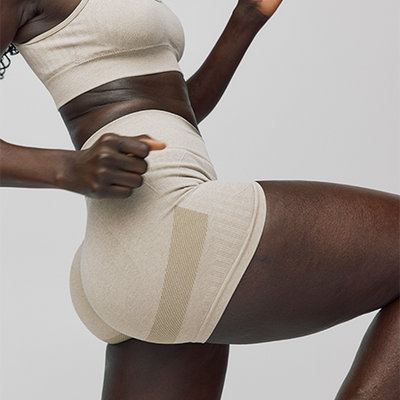
In this article /

What is a Tilted Cervix?
The cervix is the opening at the base of the uterus. This portion of the uterus protrudes into the vaginal cavity. Having the uterus hanging down into the vaginal cavity means that if you stick your finger inside your vagina, you might be able to feel your cervix. It feels a bit like the tip of your nose. Menstrual fluid passes through the cervix before exiting the vagina during your period.If the cervix, or more accurately, the uterus is tilted, this means that this opening is angled backwards. This is a completely normal anatomical variation. A tilted uterus might also be called a tipped uterus or retroverted. And people tend to use uterus and cervix interchangeably.
Typically the uterus protrudes into the vaginal cavity straight up and down. But if you find that your uterus is slightly tilted towards the back or slightly tilted forwards, this could complicate a couple of things.
How Do I Know if I Have a Tilted Cervix?
There are a few symptoms you may experience if you have a tilted cervix.- Pain during your period
- Dyspareunia, or discomfort during intercourse
- Incontinence of the bladder
- Difficulties inserting a tampon, menstrual cup or menstrual disc
Positions of the Uterus
A tilt is a normal variation of the uterus and is not usually a cause for concern. It is estimated that up to 30% of women have a retroverted uterus/tilted cervix. In most cases, it does not cause any symptoms or problems with fertility or sexual function.In some cases, a tilted cervix may cause discomfort during sexual intercourse, especially in certain positions. It might also lead to painful periods. If you’re trying to insert certain types of birth control and period products, like DIVA Cups or DIVA Discs, it might also take a bit more time to learn the proper positioning.
Is an Anteverted Uterus Good or Bad?
Anteverted is the opposite of retroverted and is tilted forward towards the bladder. It’s neither good nor bad—it’s just a variation! It is not typically a cause for concern and there aren’t often any symptoms of an anteverted uterus.In rare cases, an anteverted uterus can also be associated with symptoms such as painful intercourse, difficulty using certain types of birth control or period products, or difficulty emptying the bladder completely.
Tips for How to Insert a Menstrual Cup or Disc with a Tilted Cervix
Using a menstrual cup or disc with a tilted cervix can be tricky depending on the position of your cervix. Most often, experiencing heavy leaking is an indication that the cup or disc is not in position to collect the menstrual fluid. This could be due to the position of your cervix. Here’s what we recommend trying.For the DIVA Cup: If the stem of your cup continually shifts to the right side, your vaginal canal may be angled back and to the left. The cup will have to be inserted the same way so it can open and form a seal. Try also allowing it to open slightly as you're inserting it and then continue pushing it into position.
For the DIVA Disc: Pointing the disc down as you insert and then scooping it up under the cervix may help with positioning. This will give it more room to cover the cervix if it's tilted.
And if you’re still struggling, our Customer Experience Team is always on hand for TMI-friendly advice and help troubleshooting insertion.
If you experience discomfort or painful sex, talk to your healthcare provider. These could also be symptoms of pelvic inflammatory disease. A healthcare provider can perform a pelvic exam or imaging study to determine the position of your cervix and provide appropriate treatment options, if necessary.





















